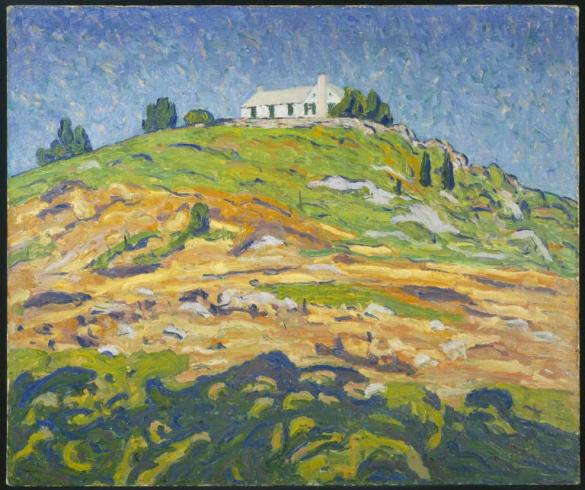American Impressionism
Paintings from The Phillips Collection

In America, the radical new style of Impressionism blended European approaches to painting with American sensibilities and preferences. Celebrated American artists transformed the heroic American landscape into a modern idiom. From the bucolic countryside to sophisticated urban centers, from parks and beaches to charming interiors, what emerged was a fresh interpretation of American life.
About the Exhibition
In America, the radical new style of impressionism blended European approaches to painting with American sensibilities and preferences. Celebrated American artists including Childe Hassam, Maurice Prendergast, John Henry Twachtman, and J. Alden Weir transformed the heroic American landscape into a modern idiom. Join the Phillips in celebrating 85 years of presenting art with American Impressionism: Paintings from The Phillips Collection, which showcases more than 65 treasured works from the golden age of American impressionism (c.1880–1920), assembled together for the first time in more than a generation.
When Duncan Phillips opened his museum in the fall of 1921, the collection included 237 paintings, of which 87 works by 25 different artists were examples of American impressionism. By far, the greatest number of these were by the acknowledged “mature” masters of the style such as Childe Hassam, Theodore Robinson, John Henry Twatchman, J. Alden Weir, and William Lathrop. The collection also included paintings by Ernest Lawson, Maurice Prendergast, Gifford Beal, and Helen Turner. These artists applied the brighter palette and broken brushwork of French impressionism to the American landscape, focusing on intimate and atmospheric views of parks and beaches as well as urban views and charming interiors. While all of these paintings were crafted with particular interest in the seasons, changing light, and optical effects, American impressionist painters differed from their French counterparts by continuing to imbue their work with larger ideas related to the emotional and spiritual character of the landscape.
Highlights of the exhibition include a range of work by many of the key players of the movement. Focusing largely on landscape painting, American Impressionism features some of the museum’s most treasured paintings. Many were painted in Connecticut, New Hampshire, New York, eastern Pennsylvania, and Massachusetts.
For Phillips, impressionism was always a question of personal temperament or subjectivity combined with natural phenomena. In the work of both Twatchman and Weir, for instance, Phillips found depictions of the intimate moods of the artists’ Connecticut properties as celebrations of the American countryside and pastoral respite from the modern world. Both artists used the language of French impressionism to explore nature’s emotional effects. Twatchman, whom Phillips considered one of America’s greatest artists, is still thought of as the pre-eminent American impressionist landscape painter. His painting, Summer, is a classic example of his work and Phillips regarded it as one of his best purchases for 1919, outranking all others, including those by Weir, Hassam, and Lawson.
The exhibition also showcases the work of a less well known but equally extraordinary artist, Allen Tucker. Phillips acquired Tucker’s paintings, Red Barns and The Rise, in 1926–1927. Considered by his colleagues to be the “American van Gogh” because of his vigorous and animated brushwork, Tucker captured the attention of Phillips who sought to add an original van Gogh to his growing collection of modern art during this period.

